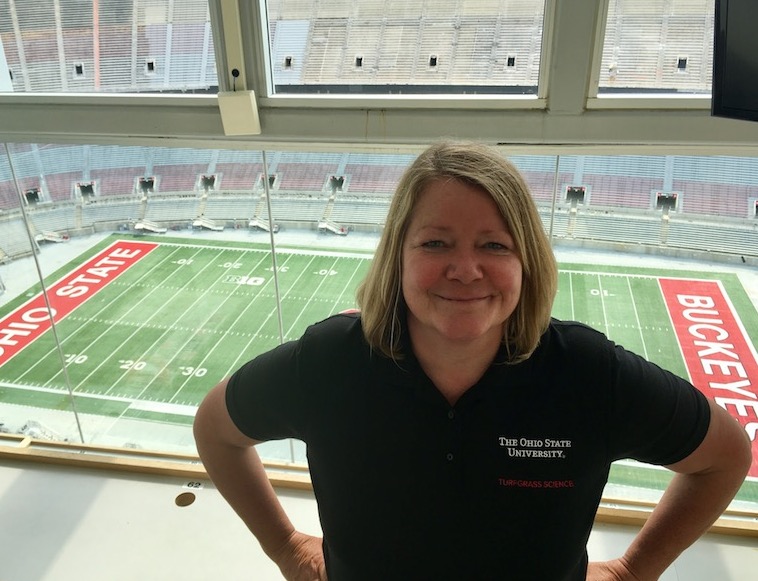Q: Our community is discussing the usage vs. resting ratios for a baseball field with natural grass outfield. Is there a ratio general guideline? For a 5-month season with three teams using the field for practice and play (U18, junior and senior), it usually averages less than 40 hours a week. Is that enough resting time for the grass? Could it sustain higher usage? The thought would be to add an additional six hours a week for a competitive youth baseball team.
A: Great question. To my knowledge, there is no usage versus resting ratio, because there are too many variables involved in the condition of a field, such as drainage capabilities, type of sport, age of athlete, budget and manpower, level of maintenance, type of grass, etc. With so many variables, it’s impossible to narrow it down to one number or even a narrow range.
What is safe to say, however, is that there is a positive correlation between usage and damage. In other words, as you increase usage, the field will receive more traffic and wear, and will therefore require more maintenance and more money allocated. Rather than looking at a golden number, I think it’s helpful for field managers to set thresholds that can be shared with field users and used as a guide for all.
Start by looking at the current usage and level of maintenance. At the current use rate, what do the fields look and perform like? On a scale of 1-10, how would you rate the field at the current use rate? If you are satisfied with the current scenario, and feel like the extra hours would not cause too much damage, you could go ahead and add the extra hours of play and monitor the field closely. The team may need to have an alternate place to play if you feel the damage is too much, especially if there is inclement weather during the extra games. Setting a threshold (i.e., a boundary) is really important in these types of situations. The threshold should be agreed upon ahead of time, by all parties, so that the fields are not ruined for everyone for the rest of the playing season.
There are resources available for evaluating field conditions and setting thresholds. Years ago, I created the Field Evaluation Document (FED) guidelines and rating card. You can download those PDFs from my website and adjust it to suit your needs (https://u.osu.edu/athleticfieldmanagement/). The Sports Field Management Association has a more comprehensive tool, called the Playing Conditions Index (PCI), that can be accessed via the SFMA website (https://www.sportsfieldmanagement.org/).
Whether you use the FED or PCI, or make your own version, it’s important that the data you collect is mostly quantitative (measured) and not qualitative (subjective). As Dr. Karl Danneberger likes to say: data is power! Data can be used in many ways. You can use it to tell a story to your field users. For example, since the infield was laser graded, there have been zero surface puddles after a rain event. Data can be used to track improvements over time. For example, soil compaction (soil bulk density) and surface hardness (Gmax) have been improved over time by regular aeration and topdressing.
Data can also be used to set thresholds. Determine what those thresholds are for each field condition you deem most important for athlete safety and playability. Since safety is the key concern, start with setting thresholds on surface evenness (how many undulations and holes), surface hardness (Gmax) and percent live ground cover. Set thresholds for the infield too – surface grade, uniformity, condition of the mound and grass-to-infield transition (lip), etc.
Other measurable items could include amount and types of weeds, occurrence of disease or insect damage, soil fertility levels, drainage capabilities, thatch depth, mowing quality, etc. Photographs are also a powerful tool to share with field users. I’ve heard many stories of field managers using pictures to show the positive benefits of using a growth blanket to enhance turf quality, or using an infield tarp to prevent puddling and cancelled games.
In summary, the extra hours should go hand-in-hand with extra maintenance and extra money in the budget. All parties should agree to a predetermined threshold, based on sound data collected on the field.
Pamela Sherratt
Sports turf extension specialist
The Ohio State University
Questions?
Send them to Pamela Sherratt at 202D Kottman Hall, 2001 Coffey Road, Columbus, OH 43210 or sherratt.1@osu.edu
Or send your question to Dr. Grady Miller, North Carolina State University, Box 7620, Raleigh, NC 27695-7620, or grady_miller@ncsu.edu


